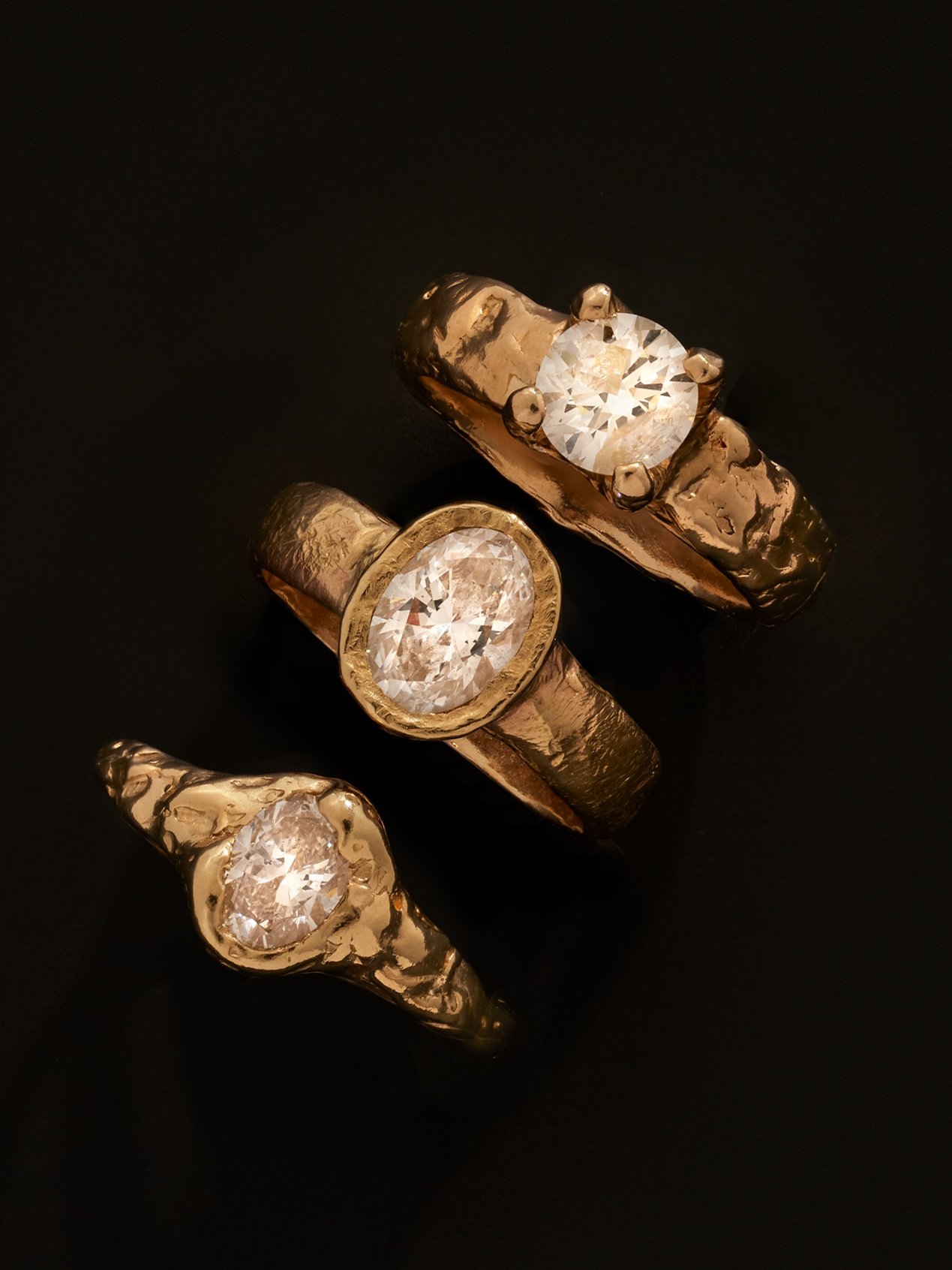Lab Grown Diamonds
The expedition to create lab grown diamonds began over a hundred years ago. After nearly fifty years of experimentation, the first successful synthetic diamond was grown in a lab in 1953. In the last two decades, the commercial industry has developed. 2015 saw the commercial availability of quality colorless diamonds and 2020 saw incredible leaps forward in the overall quality of commercially available diamonds.
What is a Lab Grown Diamond?
Lab grown diamonds are diamonds which have been created using man made technology, where as natural diamonds are formed 200km beneath the earth's surface. Incredibly, lab grown diamonds hold the same properties of durability and brilliance of natural diamonds. However they do hold some unique characteristics in the form of geometric inclusions and can be grown with a variety of unique tints and hues. Natural diamonds form organic structures that look more like the rings of trees and their inclusions mimic these shapes. While their quality and integrity are the same, there are a few things to consider before making your choice.
Lab Grown Diamonds Vs Diamond Simulants
Lab grown diamonds are not to be confused with diamond simulants such as moissanite and cubic zirconia. Lab grown diamonds are equally as hard and durable as natural diamonds, while diamond simulants are much softer and more susceptible to damage.
The Mohs scale is the measurement of mineral hardness and ranges from 1-10.
These white gemstones are ranked on the mohs hardness scale as follows.
Natural Diamonds 10
Lab Grown Diamonds 10
Moissanite 9.25
White Sapphire 9
Cubic Zirconia 8.25
White Topaz 8
Types Of Lab Grown Diamonds
There are currently two types of lab grown diamonds on the commercial market. These are called ‘High Pressure, High Temperature’ (HPHT) & ‘Chemical Vapour Deposition’ (CVD). They are both considered diamonds and sit at a 10 on the Mohs scale. They are created using different methods and therefore have their own unique qualities.
‘High Pressure, High Temperature’ Diamonds
HPHT refers to ‘High Pressure High Temperature’. They are created using a method whereby the metals and solvents are placed in a ceramic growth chamber where intense pressure and heat is applied.
These diamonds tend to have hues and tints of blues, greens, lemon yellows and grays. These diamonds can exhibit needle-like inclusions. It should also be noted that when shone under UV light, they may become phosphorescent and glow orange. This is nothing to worry about, they will quickly return to their original state.
Chemical Vapour Deposition Diamonds
CVD refers to chemical vapour deposition. This is a method whereby the diamond seeds are placed on a pedestal inside a depressurised chamber. A plasma cloud ‘rains’ carbon onto the seeds and they grow layer by layer.
These diamonds exhibit tints and hues of browns, greys and orangey pinks. They can have a grainy appearance and create cloudy and pinpoint inclusions.
CVD method tends to be utilised to create diamonds on the larger spectrum.
Lab Grown Diamond Sourcing
As with all gemstones, we prefer sourcing from our own suppliers as we cannot guarantee the quality and ethics of gemstones suppliers that we are not familiar with. This also applies to lab grown diamonds. While your lab diamond may be certified and stamped with a certain quality level, gemstone graders do not all work to the same standard. Some may value different characteristics, or ignore certain aspects of the diamond that other graders would consider notable features and therefore, certify the diamond at a different grade. As this is a newly budding commercial industry, we would suggest seeking professional advice before sourcing your own stones as to not be misled.
While lab grown diamonds have the same chemical structure as natural diamonds, new technology has allowed them to have competitive market prices. As it is a fairly new industry, the lab grown diamond market will fluctuate. If you are hoping to create a piece as a financial investment, we would advise considering all of your options.





